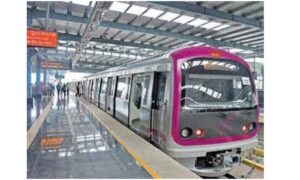In April 2020 groceries bought online more than doubled in Italy. In the UK, Tesco’s online grocery business went up from 9 to 16 percent of total country sales in the first quarter of 2020.
One of the transformative effects of the global pandemic is the change in retail buying behaviour. People, young and old, have truly accepted online shopping, and groceries have been added to the list of direct-to-consumer orders.
Online supermarket Ocado Retail reported in a tenfold increase in demand and a hundredfold increase in web traffic in April 2020 compared to pre-pandemic levels. Retired households in the UK have increased how much they spend on groceries online by 229 percent between Jan 2020 and Jan 2021. They now account for approximately 28 percent of the 6.4 million consumers who buy groceries online.
I think it’s safe to say these numbers could have been even higher, considering demand has exceeded supply since the start of the pandemic.
What this surge means for retailers?
With older demographics increasingly adopting digital buying behaviours, it looks like door-deliveries are here to stay. Last mile logistics for groceries, however, is a complex and costly business model.
To fulfil these expectations at scale, retailers will need to pivot some of their strategies to provide excellent customer experiences while keeping logistics processes as efficient as possible.
In the rest of this article I talk about some of the key challenges retailers are experiencing in the face of change, and some interesting developments to overcome these challenges.
Order size and m3:
What differentiates an average grocery order from a typical retail order (clothes, books, etc.) is that the monetary value per cubic meter typical is much lower for groceries than for other consumer goods. Take for example, rolls of toilet paper – on high demand during the first few weeks of the pandemic! They require much more space than a book or t-shirt but are valued at a fraction of the cost. It comes as no surprise that in the traditional supermarket model, retailers were happy to have the consumer carry out the last mile delivery to their homes themselves.
Varied temperature-sensitivity:
The average grocery order is a is a combination of products with a very long lasting ‘use before’ date and products that need to be consumed within a couple of days, and are temperature controlled. These range from frozen to chilled and around 14 degrees Celsius (e.g. bananas). Each of them is stored at a different temperature in separate sections of the shop and the final trip back to the home of the consumer would not take more than 15-20 minutes.
In the online model, the same mixed bag of products travels from a fulfilment centre to the consumer’s doorstep. This could take anything between 6 to 12 hours, and considering each product has its own temperature requirement, brings higher expectations in terms of how the retailer delivers the order.
New developments:
Several retailers have begun to use a temperature-controlled delivery box that can store goods for up to 24 hours in a refrigerated or even frozen state using cooling elements or ice packs. These boxes have made it easier for delivery personnel to handle and stack groceries into the delivery truck or van. On the other hand, oddly shaped products are difficult to fit in the box. And if the order is small, the retailer ends up bearing the hidden cost of transporting air.
Some retailers are managing order fulfilment out of the traditional supermarket. In most cases, this significantly reduces last mile travel times and therefore the worry regarding temperature constraints. This model, however, does not allow for the same depth of assortment that online orders generally do. In addition, there are challenges and costs involved in turning a supermarket into a fulfilment centre.
Not many retailers have explored refrigerated last mile delivery. This is yet another model that uses fully or partially temperature-controlled trucks or vans to fulfil orders in shopping crates. While this would increase upfront and running costs, it is a proven model. So far, I have however not come across many retailers that are exploring this potential solution, while it is actually commonly used for restaurant deliveries of fresh produce. So there seems to be an opportunity for further exploration here. Coincidentally my fellow Reuters Cold Chain panellist Nimish Dixit of Fresh Direct (US based online retailer) explained last week in the online Reuters webinar how they have successfully adopted this delivery model.
The last mile – a competitive advantage:
Today, retailers are having to make important decisions regarding their fulfilment model and last mile operations for the delivery of groceries.
Should picking be done in supermarkets, dedicated warehouses, large fulfilment centres, or combination of these options? Will customers receive their purchases at their doorstep or by picking them up inside the store, in a store’s parking lot, or at a designated third-party location (such as a gas station?)
The economics of each model will vary depending on the retailer’s distribution footprint, price positioning, geographic concentration of sales, and competitive environment. One thing is for certain though – retailers who crack the last mile nut, create an unbroken cold chain, and find a way to maximise operational efficiency will get an edge in the grocery market.
For more info, visit: https://www.maersk.com/
Cookie Consent
We use cookies to personalize your experience. By continuing to visit this website you agree to our Terms & Conditions, Privacy Policy and Cookie Policy.















